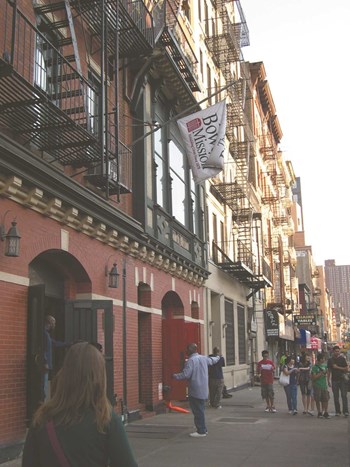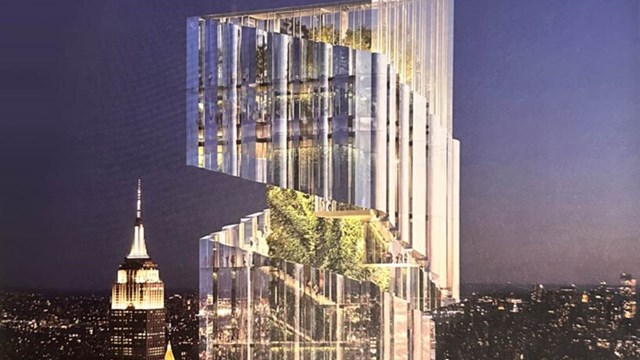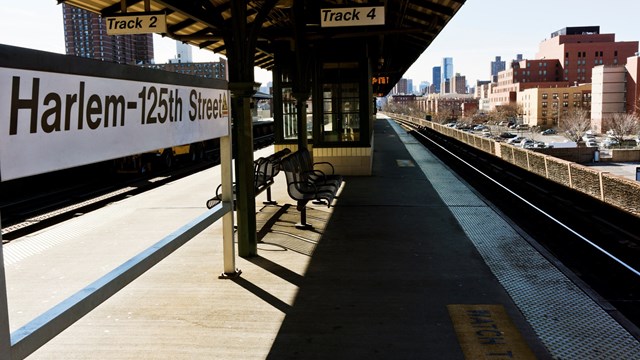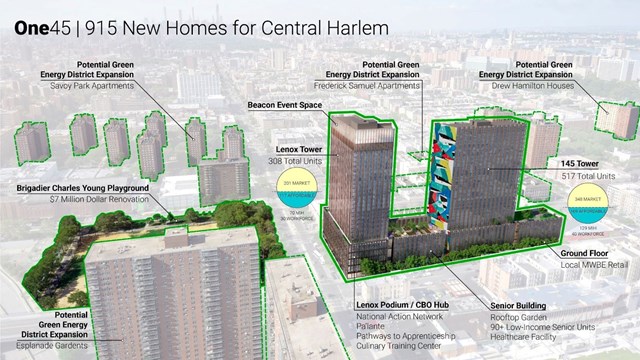
Examining a few pounds of freeze-dried goji berries in the Bowery neighborhood’s Whole Foods market, it is easy to forget that you might be standing in the exact spot where the Bowery Boys, clad terrifyingly in stovepipe hats and flared trousers, clashed with rival gang, the Dead Rabbits. You snag a smidgeon of organic goat cheese and stroll up the Bowery, completely unaware that in a different time you might have been stepping over Bowery bums stumbling out of McGurk’s Suicide Hall. And passing the New Museum of Contemporary Art with a parasol slung over your shoulder, you can scarcely hear the piercing electric echoes of CBGB, a launching pad for American punk rock and bands like the Ramones, Blondie, and the Talking Heads.
Over the years, the Bowery has gone through a great deal of changes. And more recently, as the gentrification process sweeps across Manhattan like a swiffer mop or a sightly plague, with luxury high-rises in place of locusts, it seems that the Bowery is getting a new face. And new faces too—most of them cleaner.
Oh, Skid Row
The Bowery is probably the “most iconic skid row, not only in New York, but perhaps the nation,” says David Favaloro, research manager for the Lower East Side Tenement Museum. But that iconic grittiness is not indicative of the many different transformations of the area.
The name of the area actually comes from the Dutch word for ‘farm,’ and Bowery Lane was the road leading to Peter Stuyvesant’s farm. Stuyvesant, also known as “Old Peg Leg” due to an amputation-inducing injury he received in battle against the Spanish, was the last Dutch Director-General of the colony of New Netherland, and a noted figure in the history of early New York.
Up until the early and mid 19th century, the area surrounding the Bowery and the Lower East Side was farmland. For the most part, the residents around this time were primarily native born craftsman and artisans, who “were occupying single or two-story wood frame dwellings,” says Favaloro. “The purpose-built tenement buildings that are characteristic of the neighborhood today… [were] not built until the middle of the 19th century, and that coincides with the first mass wave of immigration, mostly from Ireland” and Germany.
Shortly thereafter, with an influx of immigrants, the area became a notable destination for “working class entertainment district” and vaudeville, which it remained until the Great Depression.
And in the spirit of the Great Depression, cue the Bowery bums. And thus, homelessness, destitution and squalor consumed the Bowery and followed it into the 1980s, serving as a backdrop to the arts and music scene of the late 70s and early 80s.
In 1973, Hilly Kristal opened CBGB & OMFUG, a music club intended to showcase country, bluegrass, and blues music, which is where CBGB gets its name (OMFUG is an acronym for ‘other music for uplifting gourmandizers.’) Television and the Ramones were two of the first bands to play at the club, and soon thereafter CBGB became a haven for underground music and American punk rock, often characterized as raw, loud, and fast.
The club closed in 2006, but by then it had already become an icon, adding to the storied legacy of the Bowery and emerging out of the seediness that had characterized the neighborhood.
“There are still some elements of [seediness] now,” says Favaloro. “I think it is a very interesting area in that it has all these overlapping populations… there is certainly still a significant homeless population on the Bowery,” but there are also celebrities perusing new luxury high rise buildings.
And What Now?
“It’s got that nitty gritty downtown feeling with amazing new restaurants and shops coming up. And it’s a perfect combination of luxury condominiums… but you walk out and it’s [still] sort of this old New York, [with] this old town feel, that some people are very attracted to,” says Greg McHale, a Manhattan-based realtor with The Corcoran Group.
In between NoLita and the Lower East Side, the Bowery has a very favorable downtown location to those attracted to the nightlife and restaurants that populate the area, and continue to pop up.
“People during the day are taking advantage of the great little shops and cafes of Nolita on one side. And you walk two blocks the other way and you’ve got the really great restaurants and bars and nightlife of the Lower East Side,” says McHale.
With its many transformations and waves of different immigrant groups, the Bowery has always been an area with a rich, layered texture. And it is no surprise today that there is a wide variety of people interested in living there.
“It’s a mixed bag of everybody. Young kids just out of college are coming in - everything from that to middle-aged European buyers who want a pied-a-terre in the city… I think it says something to the strength of the downtown market right now,” says McHale.
As far as pricing, condo units are anywhere between $1,000 per square foot, and $3,000 per square foot.
“It’s all over the map,” says McHale. “I would say the average price per square foot is right around the high $1,000’s or $2,000… It really depends on the building. You can have a building that trades at [close to] $1,000 a foot, or you know if some big architect comes in and builds a fantastic building anywhere, whether it’s on the Bowery, Nolita or the LES, it’s going to trade for a high price.” But odds are long-term residents are not going to be moving into any high-priced new units.
Seth Kamil, president of Big Onion Walking Tours, which holds historical walking tours primarily in Manhattan and Brooklyn, remembers as a kid, a much more dangerous Bowery than we see today.
Gentrification
“I remember as a kid, driving across the Manhattan bridge and my father saying ‘roll up your windows, lock the door, we’re going up the Bowery.’ The Bowery was…the main focal point for New York’s homeless population for 150 years.”
However, Kamil also notes, that the homeless population started to decline in the mid 1990s, and with the decline of homelessness, the neighborhood started getting some notice from younger people who did not have the same “cultural connotation of the Bowery as a skid row.” As a result, the neighborhood started to grow in popularity, and its reputation depressed property values, making it more accessible to buyers, and the overall gentrification process that has been an enormous force in New York real estate.
For the Bowery, gentrification has come from “a combination of Southeast Asian money coming up the Bowery from Chinatown, and East Village area gentrification coming down the Bowery,” says Kamil. “Part of this change is going to be the progression and evolution of a city, but I have never seen it happen so quickly or heard of it happening so quickly.”
Upon first glance, a neighborhood cleaning up and becoming safer for residents seems like an entirely good thing. The skid row days of the Bowery marked it as a dangerous, high crime area and obviously lowering crime rates is positive for any neighborhood.
According to Kamil, there is “nothing wrong with controlled gentrification. Meaning gentrification that is done with a consideration of the larger neighborhood and the larger community… But what I have an issue with is what has become the wholesale destruction of old buildings to make way for these new, silvery glass towers.” As a historian, Kamil sees the gentrification of the Bowery as careless in its destruction of historically-significant buildings and the neighborhood’s identity as a whole. The arrival of new residents, restaurants, luxury buildings, etc., bring up the market rate rents and displace long-time residents that can no longer afford to pay to live in their suddenly sought-after neighborhood. Some argue that the history and character of the neighborhood is destroyed and only a semblance is retained—for marketing purposes.
“If you walk up and down the Bowery, you’ll still see…all of those restaurant supply places, but then you have the new museum and condo development, and there is still a little presence of the single-room occupancy hotels…and the homeless population,” says Favaloro, but clearly things are changing.
The problem with gentrification, Kamil says, is that people see a shifting neighborhood, the emergence of a gourmet grocery store, as sign of progress, “but it’s only a sign of progress to the people that are moving into the neighborhood or are of a certain socioeconomic level. Every neighborhood deserves a good supermarket. That doesn’t mean the people in the neighborhood can afford that supermarket,” especially as rising rents and stiff corporate competition drive out the mom-and-pop shops.
Whether you are an East Villager considering a move south, a Chinatown resident looking to spread your wings north, Jessica Alba or a Bowery bum, the transition of the Bowery and where it will head in the future is undoubtedly of interest.
The process is “interesting in the sense that the area has this history, this reputation as being a skid row, and I wonder what the impact of ongoing gentrification will mean for that legacy,” says Favaloro. The lack of parks, surrounding area, and subway service are, as Kamil says, “tell-tale signs that people will become dissatisfied” with the area on the long-term. But as in the past with this frequently-shifting neighborhood, we’ll just have to wait and see what happens.






Comments
Leave a Comment